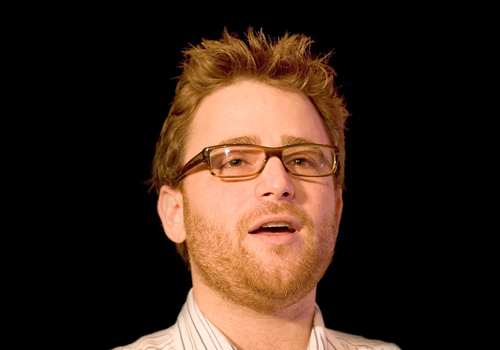
Stewart Butterfield is a Canadian entrepreneur, designer, and technologist, known as the co-founder of Flickr and Slack.
Early years and education
Butterfield was born in a small fishing village called Lund in British Columbia in 1973. He grew up for the first three years of his life in a commune in remote Canada without running water. At 5 years old, his family moved to Victoria, British Columbia and a few years later got a family computer. Butterfield went to St. Michaels University School in 1986 and taught himself to code since he was a kid. He earned money when he was in college by designing websites. In 1996, Butterfield got his BA in Philosophy from the University of Victoria and in 1998 got his Master of Philosophy from the University of Cambridge. He specialized in the philosophy of biology, cognitive science, and philosophy of mind.
Career
In 2000, Butterfield joined his friend Jason Classon and built a startup called Gradfinder.com where he co-wrote the business plan, raised the investment capital, and also helped in negotiating Gradfinder’s acquisition by Highwired.com, maintaining a healthy profit for investors and employees.
In the summer of 2002, together with his then-wife Caterina Fake and friend Jason Classon, he co-founded Flickr (Ludicorp Research and Development Ltd.) Butterfield was responsible for finance and product direction. Butterfield, together with his team, created Flickr where users could share photos. It didn’t’ turn out really well as people could only share photos when they’re online. After a few changes and updates, Flickr was eventually sold to Yahoo in 2005 for around $22 million!
In the year 1996 – 2000, he was also a software and internet product design consultant in different roles – user research, interaction design, visual and interface design, design management, and even business development and strategic consulting.
As part of the acquisition, Butterfield and Fake joined Yahoo! as the General Manager of Flickr until he left Yahoo! in July 2008.
When Butterfield left Yahoo, he founded a start-up called Tiny Speck and built the multi-player game called Glitch. Tiny Speck made some wrong technical choices and Glitch turned out not to be a good idea.
Slack
In August of 2013, Butterfield released Slack – an instant messaging team communication tool that was built by the same people behind Tiny Speck. They built the app to chat and communicate together while working on Glitch. After it was released to public in February 2014, the tool grew at a weekly rate of 5% – 10%, with over 120,000 daily users registered in the first week of August 2014. As of August 2014, Slack had raised US$60 million in venture capital and had garnered US$1.5 million in revenue.
In 1999, Butterfield became the director of the design group in communicate.com where he acted as the design lead of at the time, the largest design and development shop in Vancouver. At the age of 26, he managed several million dollars worth of projects and played a big role in the company’s rapid growth and business development.
One lesson that could be learned from Slack’s founder Stewart Butterfield is – within the mess of every failure is the seed of success. You just might have to be delirious to see it.
Butterfield’s success didn’t come easy. After Flickr was sold to Yahoo! and he didn’t find much success with the game Glitch by Tiny Speck, he founded slack, which they all loved and couldn’t work without. Slack was a big hit, showing that about 16,000 users were registered without any form of advertising – growth was based upon word-of-mouth. People started to notice the app. They liked it and have their companies use it, and they continue to spread the word about it. Slack grew to 1.1 million daily active users in less than 2 years, 300,000+ paid seats, over 180 employees, and $25 million in annual recurring revenue. Slack has raised a total of $1.2B in funding over 11 rounds and the latest funding was raised on Aug 21, 2018. It has 1,001,525 monthly app downloads.